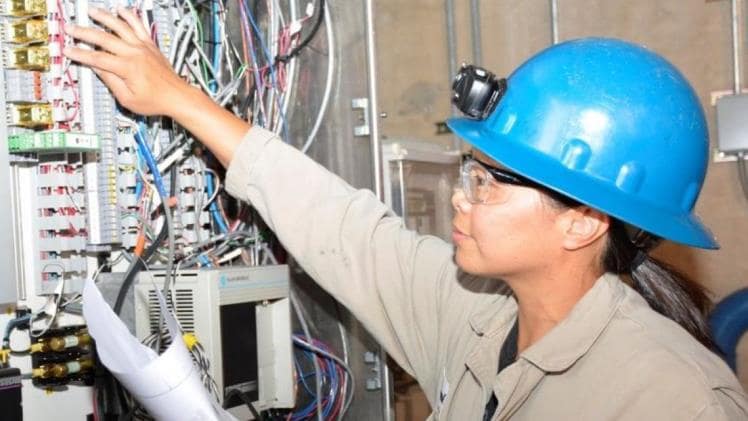
Low voltage electrical cabling first appeared in certain households around 1946. Between 1940 and 1985, this well-liked system, that is still in operation today, was installed in several residences.
Small-gauge copper cabling are linked to low-voltage switch, which turn electrical sockets and other 120-Volt devices in homes on and off and control the functioning of lights.
The term “transverter” refers to a device that converts 120 volts of electricity into 28 volts for the switching system. By pressing the low-voltage switch, you may turn on or off a relay that controls a 120V light or another appliance in your house.
The home’s relay and switches may be connected with less expensive, simpler-to-install wire thanks to the low-voltage existing electrical scheme made popular in the US. The switching relay, also known as a collection, is typically discovered in an electrical panel in the basement, garage, or attic of a building.
Low voltage switch, relays, or transformer that were initially installed via low voltage electrician may no longer function.
Here, new switches or relays for low-voltage systems of switching in buildings are detailed. These switches or relays can also be used to set up new low-voltage control mechanisms for lighting, outlets, and motors.
Caution: Repair of Low-Voltage Lighting Systems
Pay attention to: When making repairs or replacing parts in low-voltage electrical systems, building owners should use caution if low-voltage cable is being used to control lighting or other equipment. The installation of a standard 120-volt switch, a random push switch, or a classic transformer/voltage conversion may not work and, worse still, may be hazardous, offering a fire or shock risk.
What Constitutes a Low Voltage Lights System’s Different Components?
Line-voltage lights, outlets, motors, and other devices may be powered by low-voltage wire switch, relay, and junction boxes out of a low-voltage electrical wiring.
The main parts of a low-voltage system of switching that control line-voltage devices are all discussed here.
We begin by making a list of each component that is necessary for every building’s low-voltage cabling and control system. We provide links to in-depth articles that address each component’s installation, diagnostics, repair, or use.
- The line’s voltage transformer or transverter power supply for low voltage
- Switching relays are utilized in buildings with low power requirements because
- Switched 120 volt low voltage electrical equipment
- Low voltage wiring overload protection devices; Low voltage lighting and motors driven by the reduced voltage system devices for low-voltage wiring overcurrent protection
- Control panel for transformers, relays, cabling, and other devices low voltage wiring
- Low-voltage wiring sizes and overcurrent safety
Comparisons are made between the specifications for low-voltage switching-relay fusing, reduced voltage wiring/device fusing, and 120V device wiring fusing.
Do not mix up these three categories of gadgets.
We are using 120V circuits which power lights, outlets, and other similar equipment.
The majority of 120V or 240V devices are protected from overcurrent by 120V or two-pole 240V breakers that are suited to the circuit wire diameter as 15A for 14 copper cable circuits. The cabling supplies these devices at an electrical panel or sub-panel.
Fusing is necessary for low-voltage switching relay circuits.
Since they consume very little electricity (amperes), low-voltage switching relays from the 1960s and later may not be fused in older homes. Naturally, the transverter’s 120V power circuit is set up as previously explained. The low-voltage cable on the low-voltage secondary wiring, which is used to operate 120V devices and is controlled by wall switches, might, however, be unfused.
A comparable illustration of a modern structure is the low-voltage (14V) connections that power walls thermostat in HVAC systems. There are no separate fuses for these circuits.
Fusing is necessary for low-voltage systems that power low-voltage devices like 12-volt downlights that require higher current.
It’s crucial to remember that a reduced voltage equates to a larger current in amps. As a result, secondary fusing calls for the use of a multiplication of 1.25 percent (NEC). The conductor on the [low voltage] transformer’s secondary side has to be sized for the total load amperage at 12 volts.
For instance, 4.16 amps are obtained by dividing 50 watts by 12 volts. 4.16 Amps multiplied by 1.25 (or 125%), equals 5.20 Amps. Instead of a 4-amp fuse, use a 5-amp fuse. – extracted from the installation instructions for low voltage lights from Lucifer Lighting.
